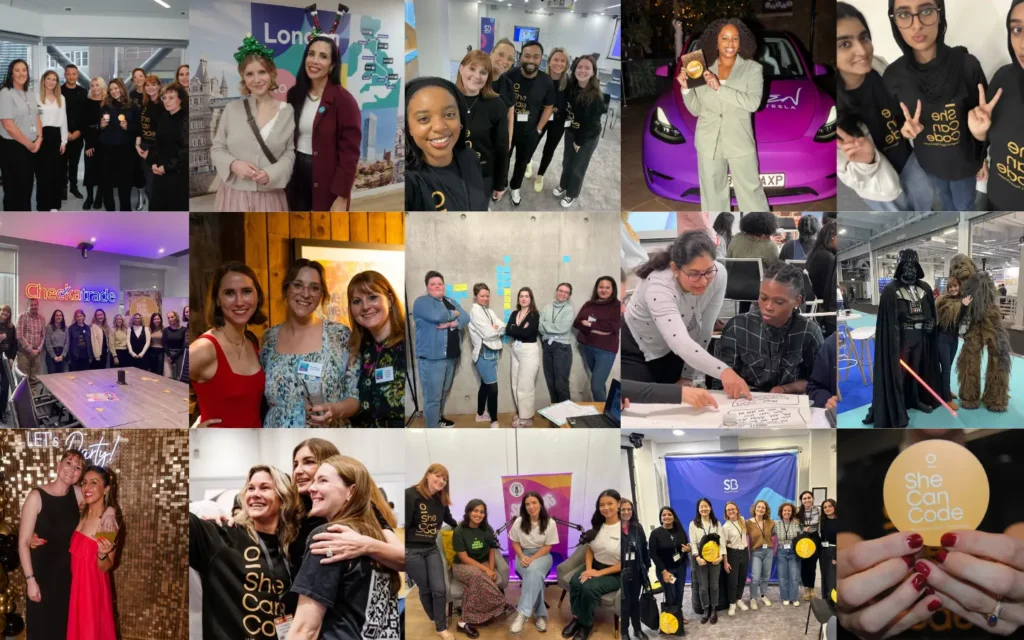Although significant strides have been made in recent years, women still remain significantly underrepresented in the tech industry, and beyond.
I believe that changing this narrative requires a focus on confidence, visibility, and community. As a female leader in tech, I’ve found that the below three elements are pivotal in empowering women to step into leadership and thrive.
Believing You Belong in the Room
Leadership confidence starts with believing in yourself. I once spoke with a female founder who expressed it beautifully: “Confidence comes when you tell yourself you’re a leader.” This means you begin to see yourself as a leader long before you have a title or any external validation. Embracing this identity is a powerful first step. By recognising your own capabilities and expertise, you lay the groundwork to project confidence in high-stakes situations.
Of course, sustaining confidence can be challenging, especially in male-dominated fields, where you are the only woman in the room at tech conferences or executive meetings. Early in my career I found that to be a challenge, but I learned an important lesson: to be comfortable with the reality and own your place. Rather than feeling like “the odd one out,” remind yourself that you’re in that room for a reason. Your skills and ideas earned you a seat at the table. Many women might feel anxiety about speaking up when outnumbered, but overcoming that inhibition is crucial. Confident leaders trust their voice and use it, regardless of who’s in the minority. Over time, this assertiveness not only advances your own goals but also challenges the status quo, making it easier for the next woman in the room.
The Power of Role Models and Representation
If confidence is the fuel, visibility is the flame. Women need to see other women in leadership. It’s hard to aspire to something you can’t visualise. I’ve had colleagues tell me they were encouraged by seeing a woman in an executive role at our company. That visible example sends a clear message to other women that they can achieve this too. Indeed, representation matters at every level. Research backs this up, showing that 43% of professional women feel they would have been more successful if they’d had a role model in their field. When women leaders are conspicuously present (whether as CEOs, CTOs, team leads, or public speakers) they normalise the idea that leadership isn’t a male-only domain.
Visibility has to come from the top down and bottom up. Companies should prioritise diverse leadership teams and highlight female talent, and women themselves can take steps to increase their visibility. That could mean volunteering for high-profile projects, speaking at industry events, or simply making your achievements known. In industries where women are underrepresented, visibility is about creating a roadmap for others. Every time a woman breaks a barrier or takes on a prominent role, it expands the realm of possibility for all women watching. Conversely, when leadership lacks diversity, it sends a discouraging signal (in fact, it’s increasingly viewed as a shortcoming when boards or executive teams have no women; a sign of how crucial representation has become). The more we spotlight women leaders, the more we chip away at the outdated notion that leadership looks like one type of person.
Lifting as We Climb
No one’s leadership journey happens in isolation. Behind almost every successful woman is a community of supporters, mentors, and peers. Throughout my career, I’ve benefited from mentors (women and men alike) who recognised my potential and fought in my corner. Their guidance and belief in me were significant confidence-boosters in those moments of doubt. At the same time, I had to be willing to listen and learn. Mentorship is a two-way street; having a great mentor matters but so does being coachable and proactive as a mentee. Those who grow are often those who seek feedback, embrace learning opportunities, and are able to refine their skills based on advice received.
Beyond one-on-one mentors, broader networks and communities play an empowering role. Professional networks, industry groups, and informal communities of women in tech provide safe spaces to share experiences and advice. They remind you that you are not alone in facing certain challenges. When I transitioned into an executive role, for instance, connecting with other women executives proved to be invaluable. In reality, the higher you rise in your career, the more crucial it becomes to have a trusted network. It’s like having an external brain trust or an accelerated MBA program fuelled by real-world experience. These communities can also open doors for you, as a well-placed referral or a heads-up about an opportunity often comes through the people you end up meeting and knowing.
Crucially, community is about paying it forward. Now that I’m in a leadership position, I’ve made it a priority to mentor up-and-coming women and share what I’ve learned. I co-host a tech podcast that features inspiring female innovators, and I’m about to launch another series to demystify executive roles for aspiring women leaders. The enthusiasm I see for these initiatives only serves to demonstrate the appetite women have for learning from each other. When we create forums to exchange knowledge and encouragement, we collectively raise the bar for what women in tech can achieve.
From Empowerment to Action
The tech world is rapidly evolving, and diverse leadership is more important than ever. We need women’s perspectives guiding product innovation, ethical AI, team culture, and business strategy. That will only happen if more women are given the opportunities to seize leadership opportunities. So, to every woman in tech (or any field) who aspires to lead: fuel your confidence, seek out visible role models (and be one when you can), and lean on a community of allies. It’s often said, “You can’t be what you can’t see.” By confidently being seen and supporting one another, we can ensure that future generations can be anything, including the next generation of leaders.








